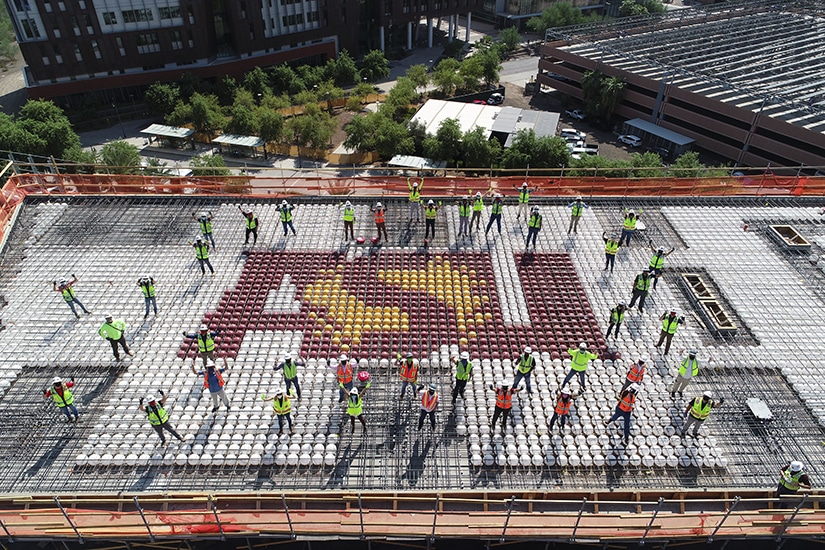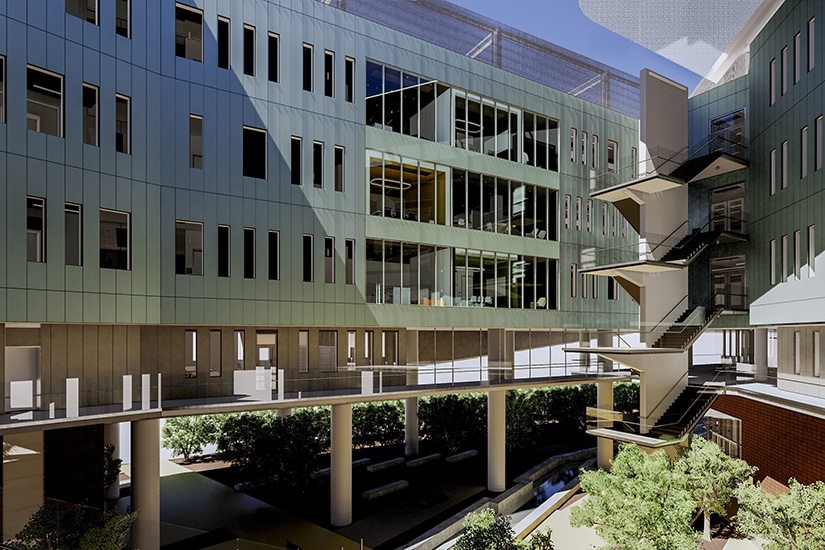|
Getting your Trinity Audio player ready...
|
In his younger years, Chris Coulter worked construction as part of RED HORSE, the civil engineering SWAT team in the Air Force. With an estimated $100 million worth of projects underway, RED HORSE squadrons are the leading edge of one of the largest military construction programs since Vietnam. It was during this tenure that he picked up an appreciation for teamwork, construction, engineering, and design understanding.

“When you’re out there in the field, all you have are your brains and understanding of the fundamentals, and you need to figure things out swiftly,” Coulter explains. When he decided to leave the Air Force after an eight-year career, he found a path into IT and developed a sincere appreciation for project management while working for Alltel, which is now owned by Verizon.
“From there, I moved to Colorado and began managing new and renovation construction for a 25,000-student school district in Colorado Springs,” he recounts. “They had just passed a $170 million bond after coming off a previously unsuccessful school construction bond. They were over budget and it was an awkward situation for them and their voting public. They wanted to make sure I knew failure was not an option.”
While there, Coulter was able to build and deliver every project within the bond effort and actually recouped $10 million with his efficient effort.
His journey then took him from the public side of the school system in the K-12 sector to Colorado College, a private liberal arts institution. It was there that he furthered his knowledge and practice of capital project delivery, energy management, the importance of relationships, and value of local resources.
“I’m of the opinion that design-build certainly mitigates risk assuming the owner is prepared to get into the decision-making process,” Coulter explains. “In the design-build situation, you have more people in the arena of the what and how, and there’s less miscommunication and uncertainty on the job.”

In 2020, a call came from Arizona State University (ASU), ranked as one of the top 100 research universities in the world. It didn’t take long for Coulter to agree to become the university’s executive director of the capital programs management group. “[My whole first year was] a COVID-dominated year, but we’re still going to deliver more than $250 million worth of work here at ASU, and none of our anticipated projects plans have been canceled,” Coulter notes. “Expectations remain high and I’m glad to be a part of that.”
One of his biggest projects right now is ASU’s $90 million, new academic building situated right in the middle of campus. When completed in 2023, the building will have up to six floors, housing 143,000 square feet of faculty offices and classroom facilities.
“I worked really hard with the university’s architect, Ed Soltero, on moving away from construction manager at-risk delivery to design-build project delivery,” Coulter shares. “It’s something I instituted at both Colorado College and on the K-12 side of things. I have a lot of faith in contractors and their ability to work collaboratively with their design partner to find a way to make great things happen.”
Another big project near completion at ASU is Interdisciplinary Science and Technology 7 (ISTB7), a research and academic delivery-minded project which fosters leading-edge research, including focuses on the sustainability of food, water, and energy. The stunning facility includes five stories of lab and research centric space totaling nearly 400,000 square feet. ISTB7 is to be complete in late December of this year.
“What the design team has delivered is an iconic structure that will catch the eye and fascination of the students, public, and researchers who will utilize this space,” Coulter describes.

ISTB7 also is accompanied by a $14 million pedestrian bridge that connects a parking garage across the street over University Boulevard and into the building. With both projects and hundreds of others, Coulter relied on his team of approximately seventy architects, design professionals, and project managers to make the respective delivery and design processes seamless and ensure that the stakeholders are satisfied through the entire project delivery process. That coordination requires a great deal of engagement and process discipline, he notes, which he attributes to his military training.
“It starts with stakeholder appreciation and care, and making sure everyone understands that their opinions, their role, and everything they do is valuable,” Coulter shares. “One of the things I try to do relative to delivering on the expectations we have here at ASU is to be consistent. It’s very powerful to keep people encouraged and to keep people in a willingness-to-take-risks mode. Courageous leadership is certainly a legacy minded habit I value.”
Despite his tremendous success, this wasn’t the career Coulter expected. He never had much interest in construction early in life, and he compares himself more to someone you might see at Home Depot on a weekend, looking to accomplish a home DIY project and heads back to the store two or three times because they want to finish the right way. But what he found rewarding in construction was a lot like what he found rewarding in the military: the ability to work with a team to accomplish difficult tasks.
“I’m a big fan of the quote by Marcel France: ‘When you hear the sounds of cannons, what do you do? Do you walk towards them or walk away?’ I try to encourage in my team to walk towards the sound, ask questions, find ways to make the outcome better than when you found it,” he says. “We get in there, see what’s going on, and figure out what we can do to solve the problem.”


